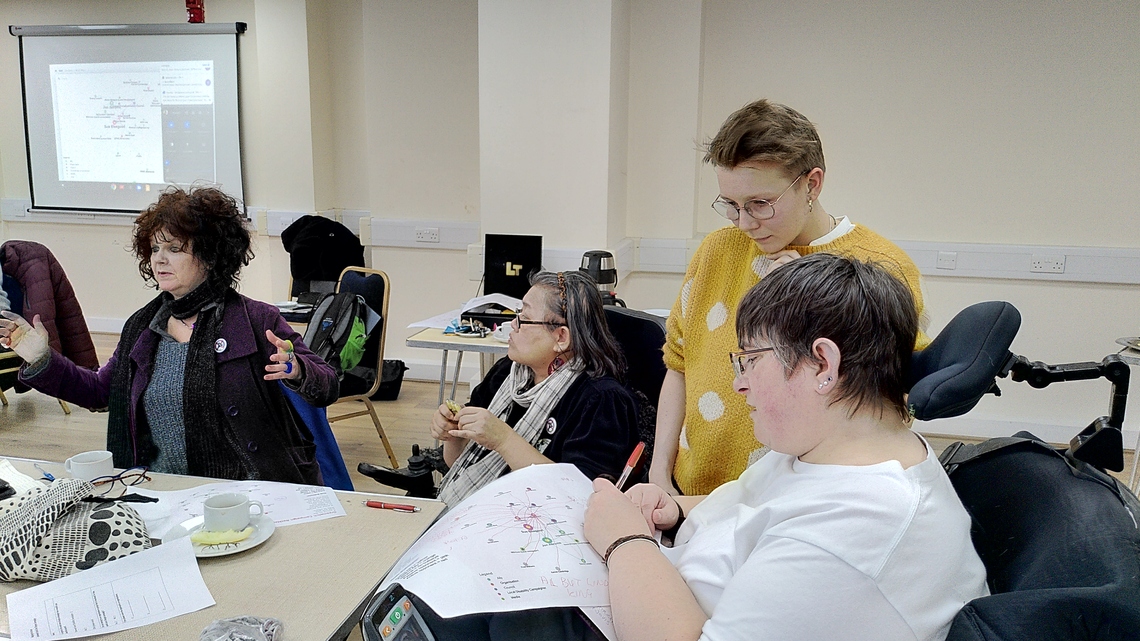Can Net Mapping be accessible to all?
This blog looks into the accessibility barriers we have faced during this project and different strategies for overcoming them.
The accessibility of NetMapping was a question raised by partners at initial partnership meetings. The HEAR Network and Inclusion London were particularly concerned about their member's being able to use Net Maps e.g. How does it work if you have a visual impairment? or Will it be accessible to people with learning disabilities?
So it was agreed that embedding accessibility at the heart of the project from the beginning would form the basis of overarching best practice, resulting in better access to, and understanding of, Net Mapping by all.
Our first practical experience was testing out Net Mapping in action (pre pandemic) was a mapping workshop with disabled people campaigning against rises in social care costs in Greenwich. You can read more about this session here.
We used a paper and digital approach at this session and made a note of any accessibility issues experienced which included the choice of colours used and size of components on the map, along with a request from those with visual impairments to access the initial maps on a screen so they could zoom in themselves.
As the overall NetEquality programme developed there was an Ideation workshop which resulted in a number of experiments with partners forming small working groups to progress these focused ideas.
Our Inclusion London colleagues again raised accessibility of Net Mapping as a concern, so a focus group on Net Mapping and accessibility was facilitated by the HEAR Network. From this initial session, the Experts on Access group was formed, comprising of 8 people who have now met 5 times, with their time contributing to this work funded through the project.
The Experts on Access group comprised of:
- Barry McDonald, Bromley XbyX
- Chris Pavlakis, Community Action to Inspire Hope
- Francis Poltera, Bromley XbyX
- Hameed Khan, Shining Stars Community Group
- Maureen Childs, Green Seniors
- Penny Fraser, Independent Mental Health Consultant/Facilitator & Researcher
- Robert Koch, Personal Councillor, Befriender & Covid-19 Support Champion
Drew Mackie - the Net Mapping conusltant working on the programme ran two accessibility workshops with this group and captured issues identified. What transpired from this work?
- It's important to look at what colours are used
- The initial big messy map view can be scary
- 'How to...' documents created need to provide comprehensive Alt Text for any graphics
- Sufficient training and support is required for some people to feel confident using the NetMap
- It's possible to influence tech companies. Christine from the HEAR Network met with SumApp (the suvey tool we have been using to feed data into the Kumu map), influencing accessibility options as they move to a new tech platform
In addition, Natalya Dell from Inclusion London did further consultation with their member groups and compiled a report of issues Network Mapping for Inclusion Londonn Overview. She then went on to write a Kumu Network Mapping Viability Report for the project.
Her conclusions included the following key issues:
- Data integrity - this included issues of how information would be kept up to date and privacy
- Technology and data skills - most engaged had lower level skills and didn't necessarily have the time to learn
- Using a data analyst and mapping project manager - this was considered a good option to support Disabled People's Organisations and to explore further
Her recommendations were to:
- Ensure the mapping project is designed to be useful for participants and their organisations.
- Design an appropriate data capture system
- Assist with data collection to make sure it is accurate and appropriate and that busy and non-technical participants are encouraged and supported to provide updates
- Liaise with and support participants in identifying the best data categories for them
- Help participants identify suitable contacts to connect with
- Overcome the Kumu learning curve challenges
- Make effective queries of the mapping data which includes understanding how to translate a human question into a data query
- Interpret and explain the mapping output to different users and organisations in appropriate ways as needed
Overall conclusions
Although we have addressed some of the issues raised as the project developed, there are more fundamental accessibility barriers that we haven’t been able to overcome.
The technical skills required for people to confidently interrogate the NetMap requires training and time and this time is increased for people experiencing accessibility barriers. They often have less time and tend to continue sharing information and connecting informally rather than using the NetMap. Network mapping in its current form is also not very accessible for people who use screen readers.
However, it is possible to display and collect the data in alternative formats. This would require development with people from across the spectrum of accessibility needs to make sure the data is displayed in an intuitive and quick to use format, but this would require more funding and time.
Despite the accessibility barriers, the Experts in Access group and other members who have been engaged in the project so far are committed, enthusiastic and see the need for better and easier ways to share knowledge, skills and resources with each other.

